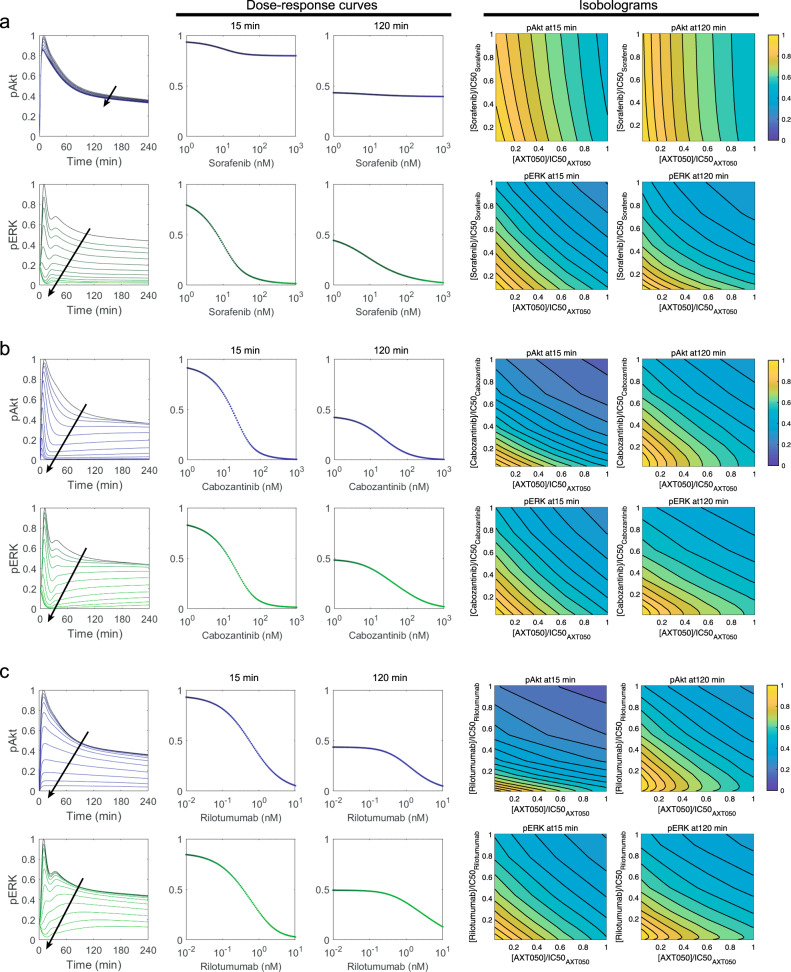Fig. 6.
Combination of AXT050 peptide with other drugs targeting the hepatocyte growth factor (HGF) pathway. Combination of AXT050 peptide with sorafenib (a), cabozantinib (b), and rilotumumab (c) along with their respective isobolograms are illustrated here. In the first column, arrows show the direction of increase in the inhibitor concentration, which was varied in the range of 1–1000 nM for sorafenib, 1–1000 nM for cabozantinib, and 0.01–10 nM for rilotumumab. Phosphorylation of Akt (blue) and ERK (extracellular-regulated kinase) (green) are shown for simulations of different levels of each inhibitor (first column). Dose-dependent changes in Akt and ERK phosphorylation at early timepoint of 15 min (second column) and late timepoint of 120 min (third column) illustrates the inhibition potential of each simulation drug as monotherapy. The combination of AXT050 peptide with each of the drugs was simulated over the therapeutic range, half-maximal inhibitory concentrations (IC50s) were calculated, and isobolograms were produced for 15 min (fourth column) and 120 min (fifth column) for phosphorylated Akt and ERK, to be able to visually explore synergistic combinations. All simulations are under 40 ng/ml HGF treatment

